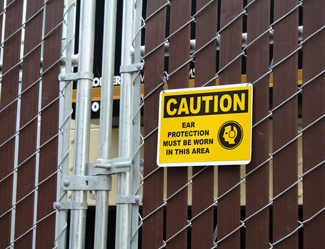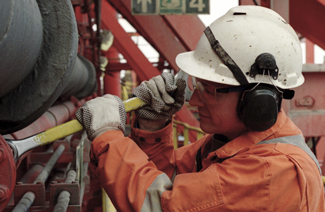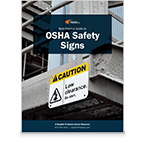OSHA Hearing Protection Requirements
03
February,
2023
2 MINUTE READ

The stats don't lie: According to the National Institute for Occupational Safety and Health, 22 million workers are exposed to potentially damaging noise each year. In turn, $242 million is spent every year on workers' compensation for hearing loss, per OSHA.
Whether in manufacturing, construction, or other noisy industries, workers must remain vigilant of noise hazards-and for employers to ensure a safe working environment.
Fortunately, OSHA offers numerous rules, regulations, and worker protections to mitigate noise hazards. Here's a look at those hazards-and what OSHA has to say about hearing protection on the job.
Understanding and Reducing Noise Hazards

Noise is measured in decibels, which measures the intensity of a specific sound on a logarithmic scale. This means that even a small change in the number of decibels can lead to a severe change in the noise level and increase the potential for hearing damage.
The impacts of noise hazards can range from short-term damage (such as tinnitus) to permanent damage (such as total hearing loss). It doesn't take much for noise hazards to pose a risk; even brief exposure at high sound levels can cause permanent damage, but so can long exposures at lower sound levels.
When left unaddressed, noise hazards can have several debilitating impacts on your workforce. Those may include:
- Decreased health (leading to workers' compensation claims and missed time at work)
- Lower productivity and efficiency (when workers struggle to communicate)
- Increased workplace accidents (when warning signals and sirens are difficult to hear)
Fortunately, employers can take several steps to reduce workplace noise hazards. Here are a few:
- Choose quieter tools and machinery
- Operate noisy machines when fewer people are exposed
- Limit worker exposure to particular noise hazards
- Display signage encouraging or requiring workers to wear hearing protection
- Place walls, curtains, and other barriers between employees and the noise source
OSHA Hearing Protection Requirements

OSHA's standard for occupational noise exposure (29 CFR 1910.95) establishes limits on workplace noise exposure.
Whenever noise exposure levels reach a time-weighted average sound level of 85 decibels for eight hours or longer (or 90 decibels in the construction industry), employers must take steps to protect employee health.
When noise levels exceed that amount, 29 CFR 1910.95 outlines the following steps for establishing a hearing conservation program and protecting employee health:
- Conduct monitoring, sampling, and annual audiometric testing programs with personal noise monitoring devices; these can tell which employees are exposed to excessive noise and identify any applicable hazards.
- Implement procedures for workers whose tests reveal hearing loss after annual audiometric testing. These results should be measured against an initial baseline test and may include a retest within 30 days.
- Ensure that impacted workers can observe the noise measurement process.
- Notify employees whenever time-weighted average sound levels reach 85 decibels for eight hours or longer.
- Offer training programs that educate employees on the effects of noise on hearing, the purpose of hearing protectors, and the rationale for testing.
- Provide (and evaluate) hearing protection. This may include earmuffs, earplugs, or a combination of the two. Employees should also receive instruction for fitting, testing, and training for proper use (provided at no cost to workers).
- Offer clinical audiological evaluations, as appropriate.
Resources for Meeting OSHA Hearing Protection Requirements
Duralabel carries a variety of preprinted signs and labels that warn employees when hearing protection is required. The durable signs and labels are available in numerous materials and sizes, with several messages available to meet your facility's unique needs. Browse our selection of hearing protection signs.
Stay Compliant, Protect Employees
Ensure your staff is aware of hearing protection requirements with OSHA compliant safety and PPE signs. Our free OSHA Safety Signs Guide will show you the standard templates required to meet OSHA guidelines. Download your copy today!
RELATED RESOURCES

OSHA Sound Levels
What is noise? Is all noise bad? Where does noise come from? Vibrations detected by the human ear are called ...
Read
Protect Your Ears: Strategies to Prevent Work-Related Hearing Loss
It is no secret that noise plays a factor in day-to-day industrial manufacturing. Unfortunately, it is also ...
Read
8 Ways to Identify and Eliminate Noise Hazards in the Workplace
Occupational noise hazards are one of the most common workplace safety concerns. Our hearing is sensitive and ...
Read.png)



